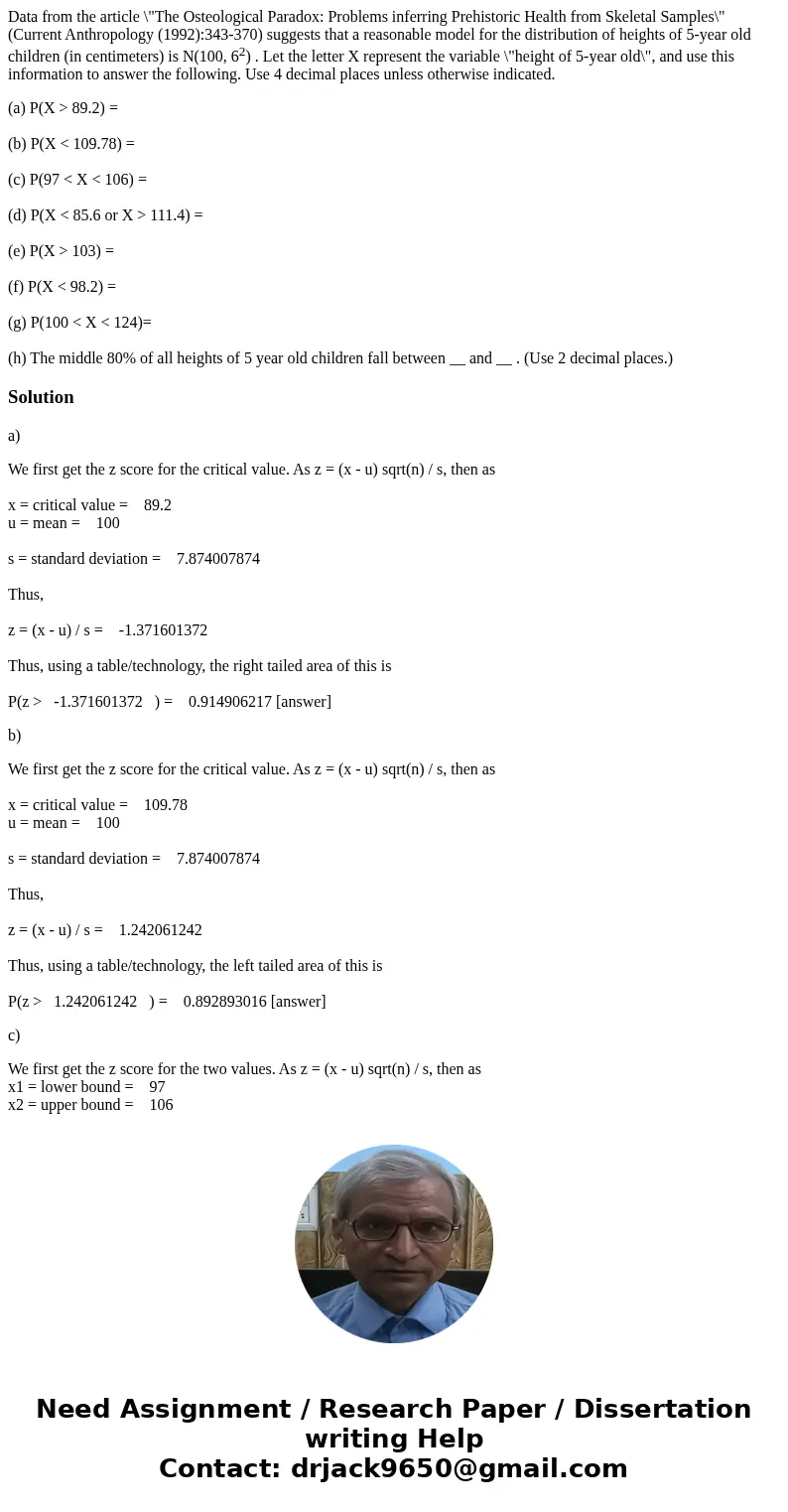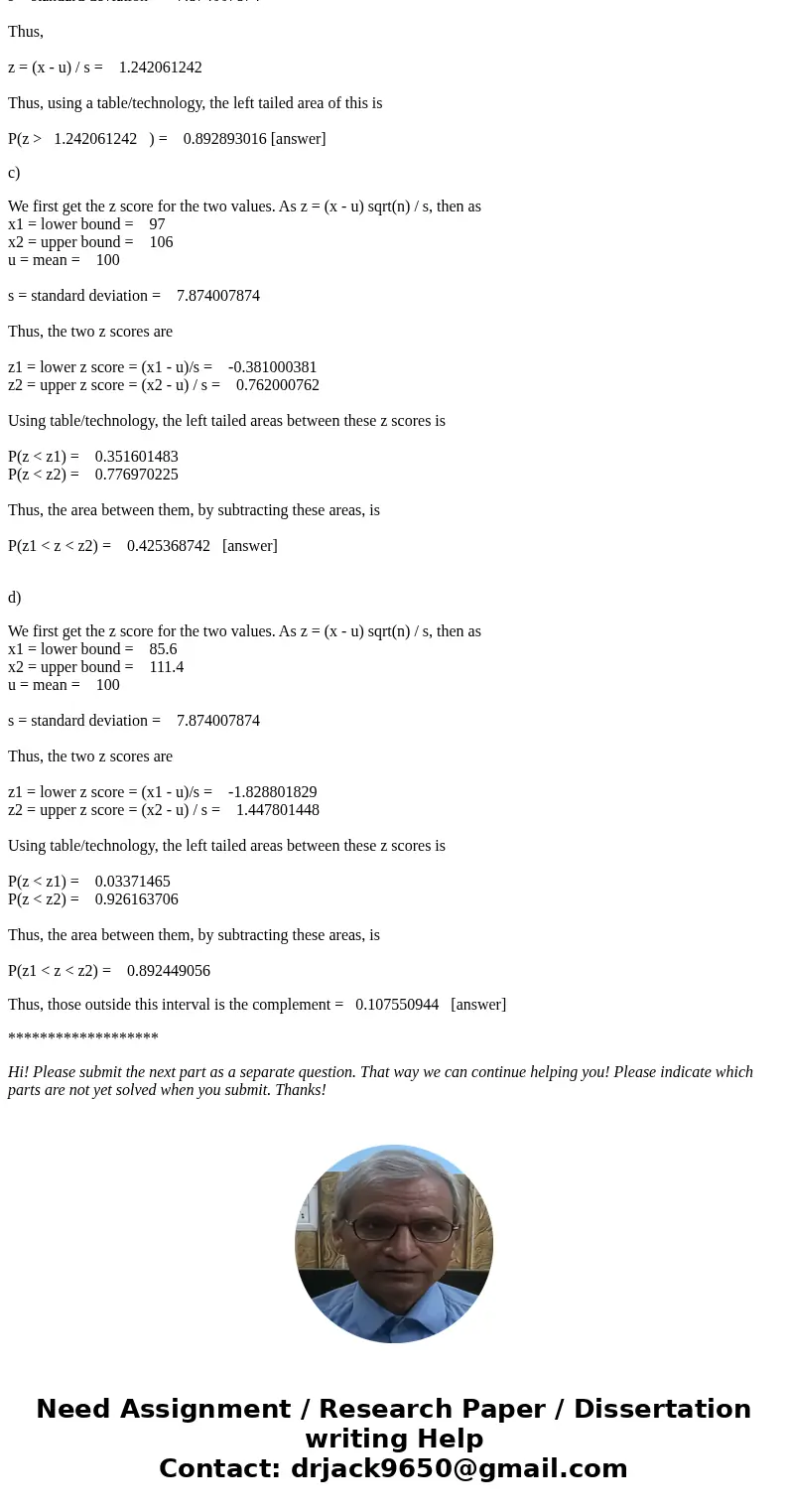Data from the article The Osteological Paradox Problems infe
Data from the article \"The Osteological Paradox: Problems inferring Prehistoric Health from Skeletal Samples\" (Current Anthropology (1992):343-370) suggests that a reasonable model for the distribution of heights of 5-year old children (in centimeters) is N(100, 62) . Let the letter X represent the variable \"height of 5-year old\", and use this information to answer the following. Use 4 decimal places unless otherwise indicated.
(a) P(X > 89.2) =
(b) P(X < 109.78) =
(c) P(97 < X < 106) =
(d) P(X < 85.6 or X > 111.4) =
(e) P(X > 103) =
(f) P(X < 98.2) =
(g) P(100 < X < 124)=
(h) The middle 80% of all heights of 5 year old children fall between __ and __ . (Use 2 decimal places.)
Solution
a)
We first get the z score for the critical value. As z = (x - u) sqrt(n) / s, then as
x = critical value = 89.2
u = mean = 100
s = standard deviation = 7.874007874
Thus,
z = (x - u) / s = -1.371601372
Thus, using a table/technology, the right tailed area of this is
P(z > -1.371601372 ) = 0.914906217 [answer]
b)
We first get the z score for the critical value. As z = (x - u) sqrt(n) / s, then as
x = critical value = 109.78
u = mean = 100
s = standard deviation = 7.874007874
Thus,
z = (x - u) / s = 1.242061242
Thus, using a table/technology, the left tailed area of this is
P(z > 1.242061242 ) = 0.892893016 [answer]
c)
We first get the z score for the two values. As z = (x - u) sqrt(n) / s, then as
x1 = lower bound = 97
x2 = upper bound = 106
u = mean = 100
s = standard deviation = 7.874007874
Thus, the two z scores are
z1 = lower z score = (x1 - u)/s = -0.381000381
z2 = upper z score = (x2 - u) / s = 0.762000762
Using table/technology, the left tailed areas between these z scores is
P(z < z1) = 0.351601483
P(z < z2) = 0.776970225
Thus, the area between them, by subtracting these areas, is
P(z1 < z < z2) = 0.425368742 [answer]
d)
We first get the z score for the two values. As z = (x - u) sqrt(n) / s, then as
x1 = lower bound = 85.6
x2 = upper bound = 111.4
u = mean = 100
s = standard deviation = 7.874007874
Thus, the two z scores are
z1 = lower z score = (x1 - u)/s = -1.828801829
z2 = upper z score = (x2 - u) / s = 1.447801448
Using table/technology, the left tailed areas between these z scores is
P(z < z1) = 0.03371465
P(z < z2) = 0.926163706
Thus, the area between them, by subtracting these areas, is
P(z1 < z < z2) = 0.892449056
Thus, those outside this interval is the complement = 0.107550944 [answer]
*******************
Hi! Please submit the next part as a separate question. That way we can continue helping you! Please indicate which parts are not yet solved when you submit. Thanks!


 Homework Sourse
Homework Sourse